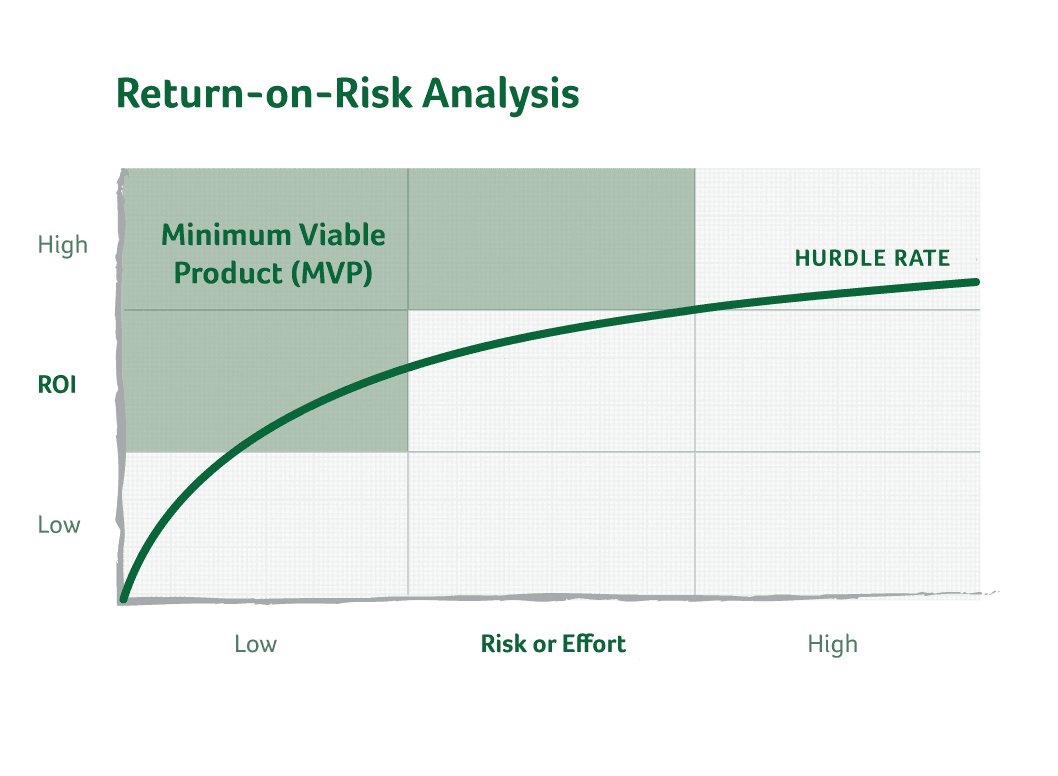Minimum Viable Product
- SyncDev
/ Minimum Viable Product
Minimum Viable Product
An MVP is improved over time in the software history, mainly MVP stands for customer discovery in the quickest time frame with minimum effort.
Nowadays, most people are trying software in the MVP approach. Actually, the MVP approach not only applies to software; it can be applied in any form of business.
What is an MVP?
We define MVP as that unique product that maximizes return on risk for both the vendor and the customer.
MVP or Minimum Viable Product is the basic version of a product that can still be released to the market and provide value to customers. It typically includes only the core features necessary to solve the main problem or address the primary need of users.
The purpose of an MVP is to quickly test the product's usability from users, gather feedback from users, and iterate based on that feedback. This approach allows companies to minimize development costs and time to market while ensuring that they are building something that meets the needs of their target audience.
Sometimes, teams can get carried away with ideas, putting too much into the first product without considering the risks. For example, one company trying to create an AI chatbot needs to invest a lot of time and developer cost, but they can build the simplest version and release it to see how customers are using it. Based on that usage, they can improve the product. So, MVP is mainly for the customer-centric approach, where we can easily validate the product that the customer wants.

Simply speaking, the MVP is the sweet spot in the upper left quadrant of ROI on the vertical axis and risk, which correlates directly to effort and time to market, on the horizontal axis.
Minimum Viable Product (MVP) Benefits
The MVP, or Minimum Viable Product, is a crucial solution for new product releases, balancing the need for essential features with the risk of overwhelming complexity. Products lacking key features often fail quickly, while those with too many features face diminished returns and heightened risks for both the seller and the buyer.
The MVP approach minimizes these risks by focusing on the core functionality required for initial success. However, finding the right balance can be challenging for teams.
SyncDev offers a systematic approach to determining the MVP, combining proven methods with customer interaction to ensure the product meets essential needs without unnecessary complexity. This process not only results in a successful MVP but also strengthens relationships with customers and generates valuable insights for future development.
How to Create a Minimum Viable Product (MVP)?
Creating a Minimum Viable Product (MVP) involves many steps to ensure that you are building something valuable with minimal resources.
Here is the complete guide to creating an MVP:
- Identify the Problem: Understand the problem you are trying to solve and who your target customer base.
- Define the Core Features: Determine the essential features your product needs to address the identified problem for the customers. Focus only on what is necessary for the initial version.
- Prototype: Create a prototype or mockup of your product to visualize how it will work and gather feedback from potential users or customers.
- Develop: Build the MVP with the core features identified earlier. Keep the development process lean and focused on delivering value quickly.
- Test and Gather Feedback: Release the MVP to a small group of users and gather feedback on their experience. Pay attention to how they interact with the product and what improvements they suggest. Take proper notes or document on the improvement suggestions.
- Iterate: Use the feedback collected to iterate on the MVP. Prioritize improvements based on user feedback and make necessary adjustments to enhance the product.
- Launch: Once you have refined the MVP based on user feedback, launch it to a wider audience. Monitor user behavior and continue to iterate based on real-world usage and feedback.
- Measure Success: Define key metrics to measure the success of your MVP, such as user engagement, retention, and conversion rates. Use these metrics to evaluate the effectiveness of your product and guide future iterations.
Remember, the goal of an MVP is to validate your product idea with minimal resources and iterate based on real-world feedback. Keep the focus on delivering value to your users and refining your product over time.
Benefits of MVP
The MVP solves a variety of problems, especially on a product’s first release. Products without required features fail at sunrise but products with too many features cut return and increase risk for both vendor and customer.
Moreover, the return-on-risk ratio drops exponentially with an abundance of features. The permutations and combinations of use cases that must be designed for, tested, and fixed increase development staff, development complexity, quality assurance cost, cost of sales, and time to market for the vendor. It increases time to adoption, training, customer dissatisfaction, and level of service required for the customer.
Too large or too small a product are big problems. The MVP is the difficult-to-determine sweet spot between them. Teams flounder tactically in trying to determine the MVP.
SyncDev fixes these problems for early-generation and mature, bloated products by taking teams through a proven, methodical, intensely interpersonal, customer-facing, tools-based, customer experience that results in the MVP. To boot, the engagement process repairs relationships and builds a virtual backlog of customer purchase interest that accelerates revenue growth once the MVP ships.